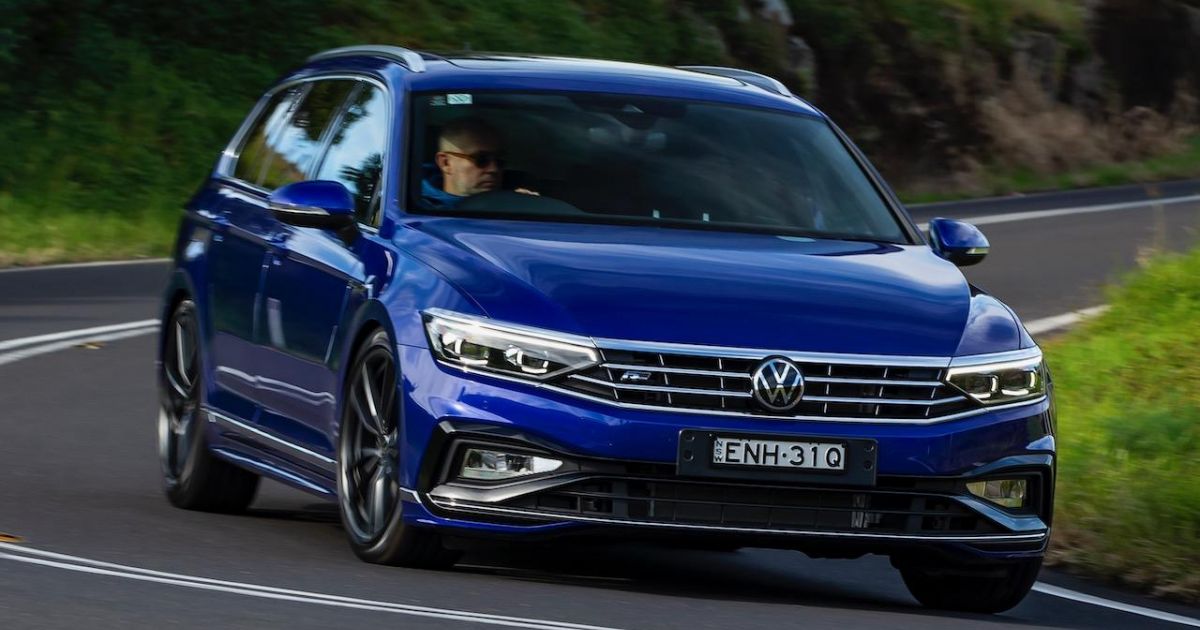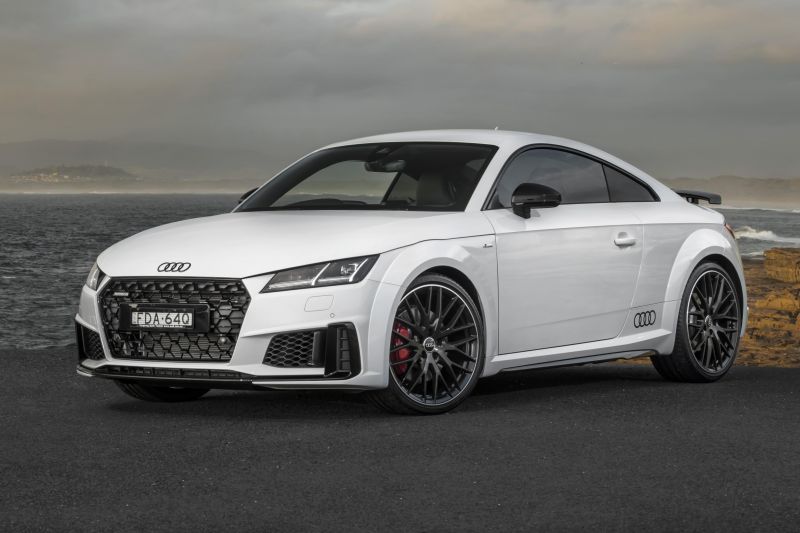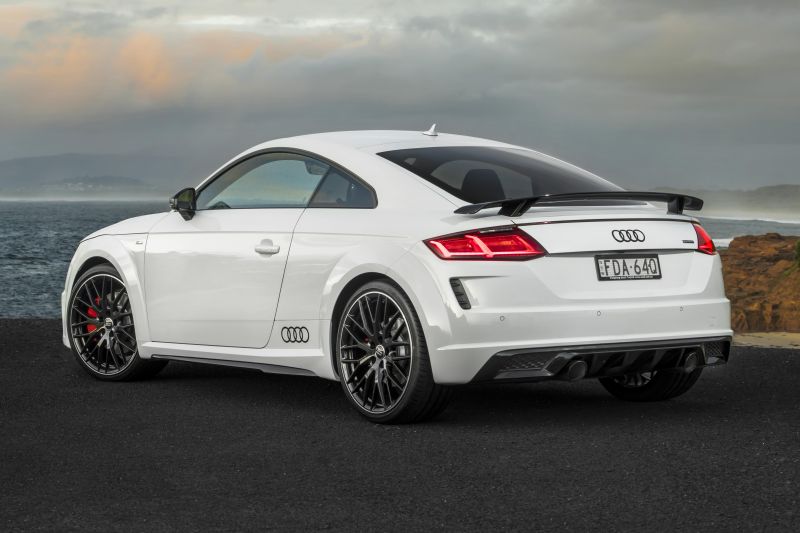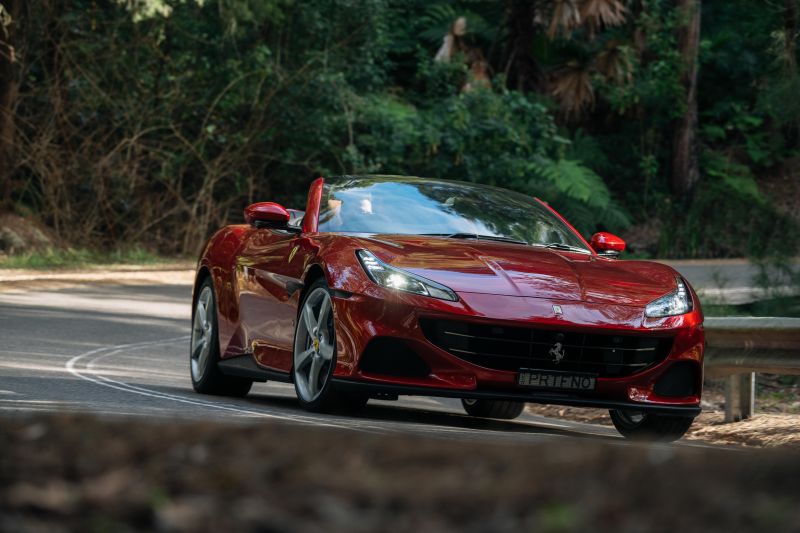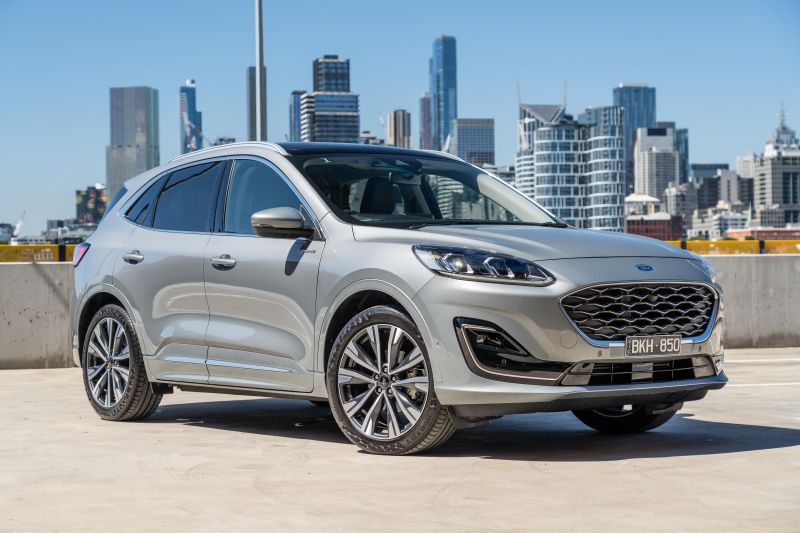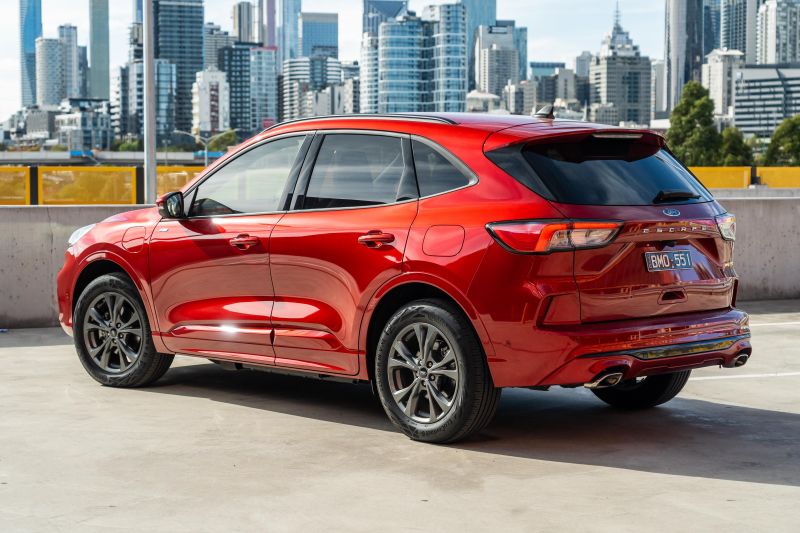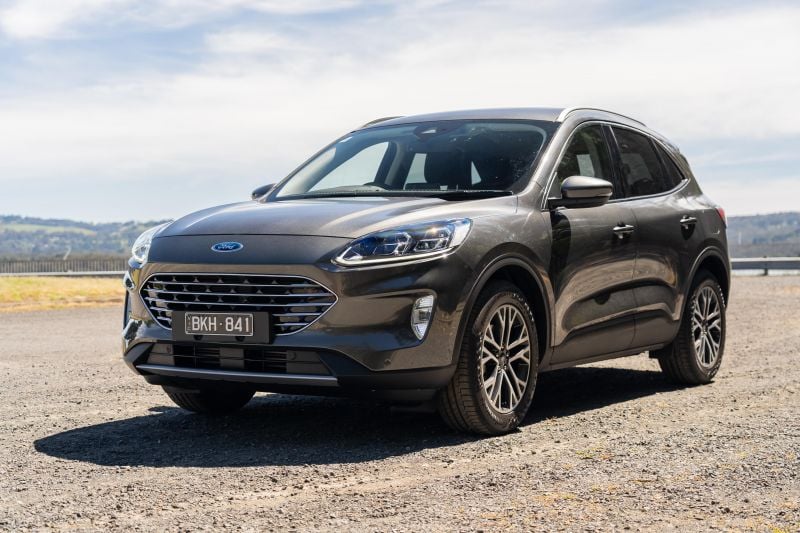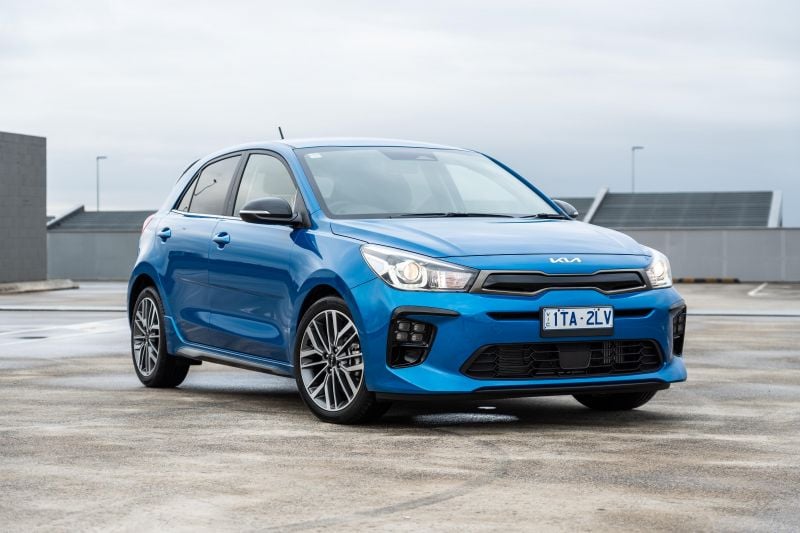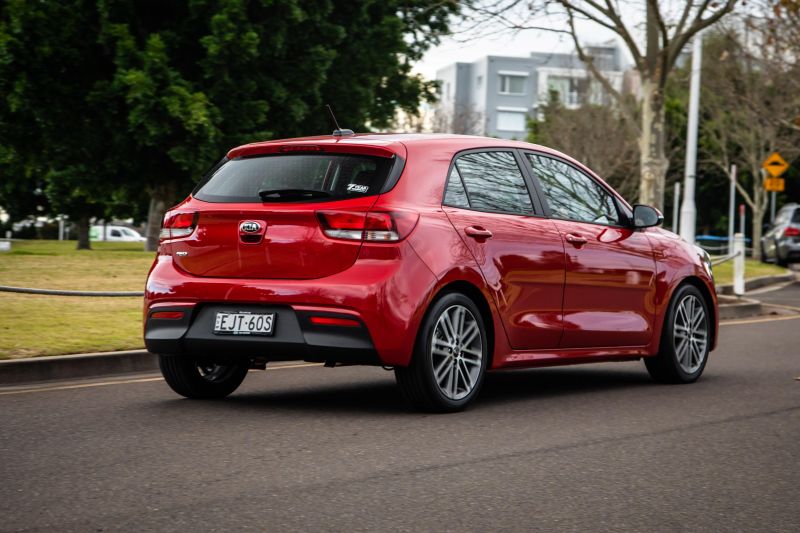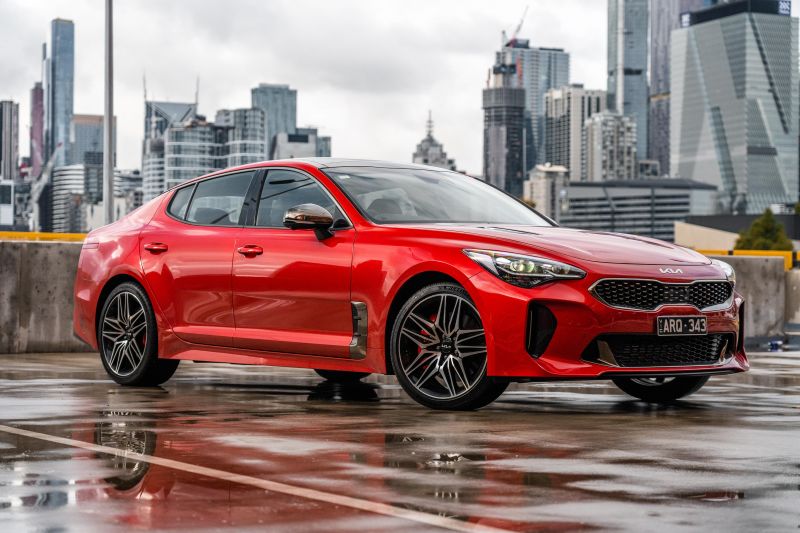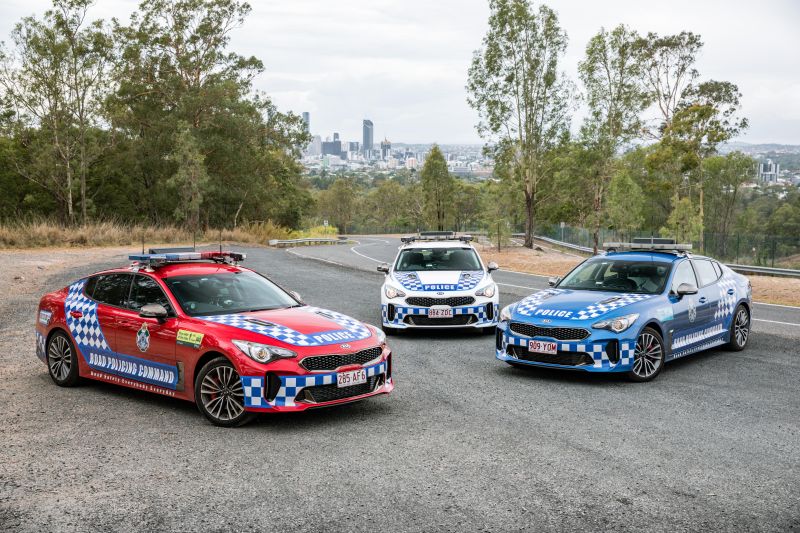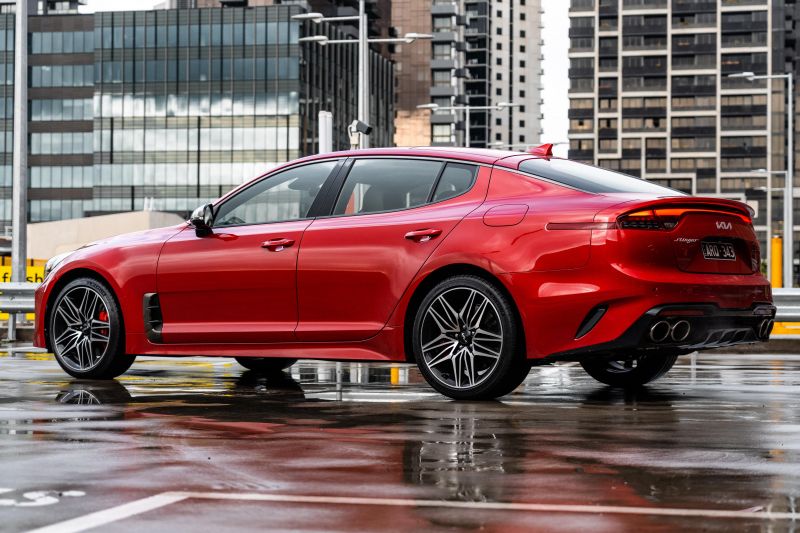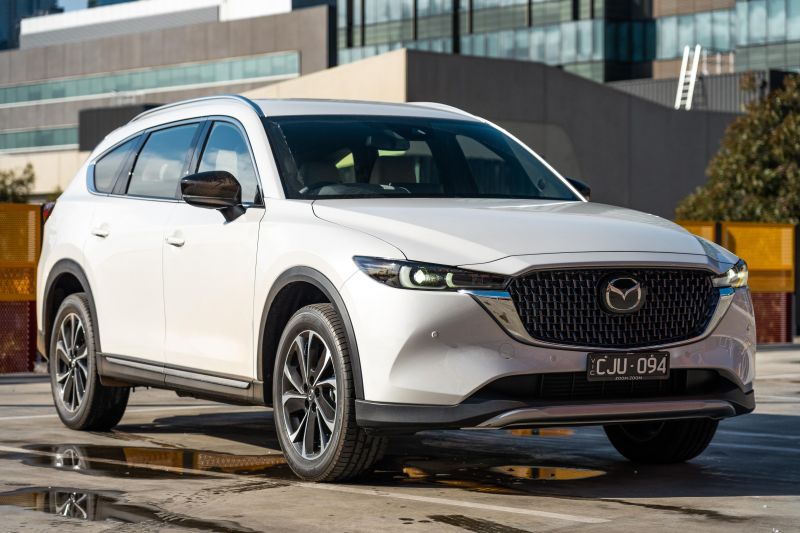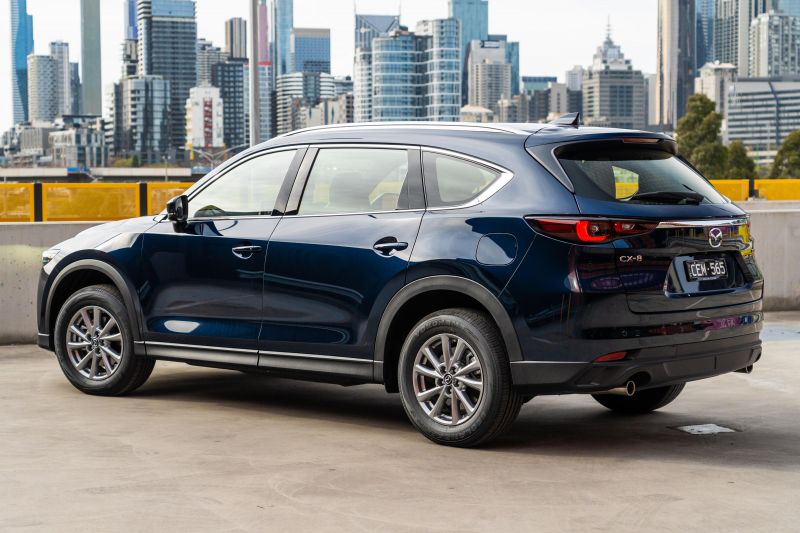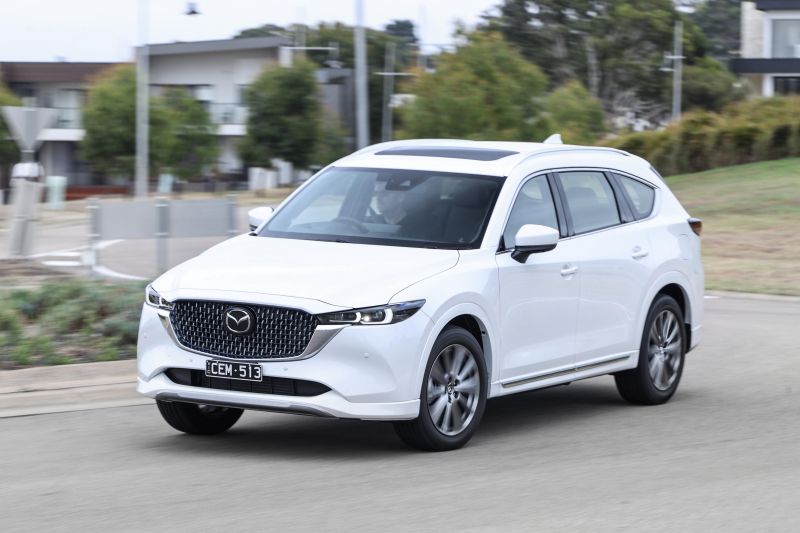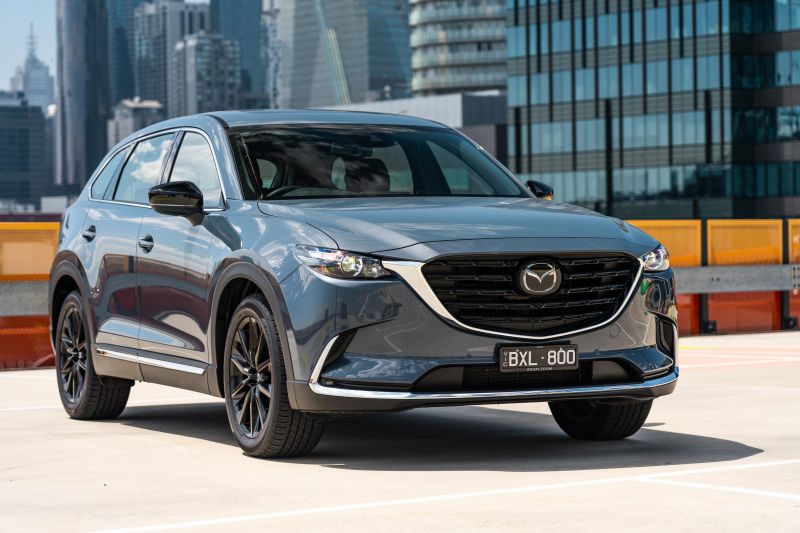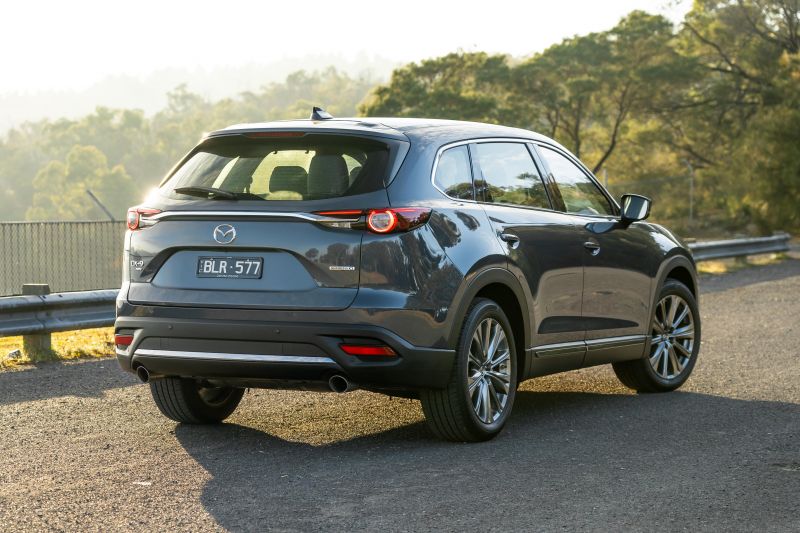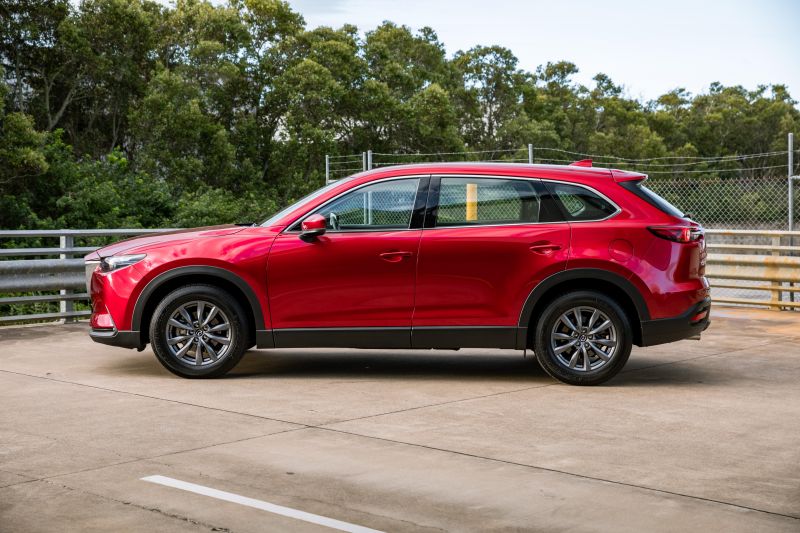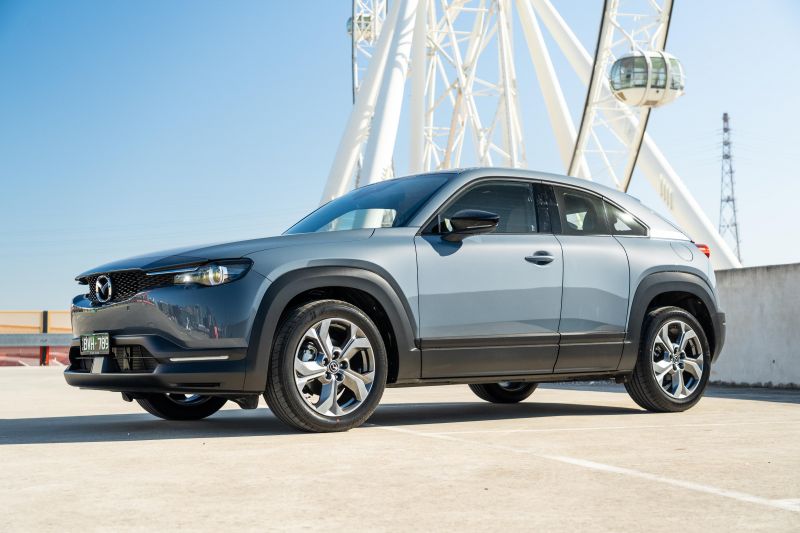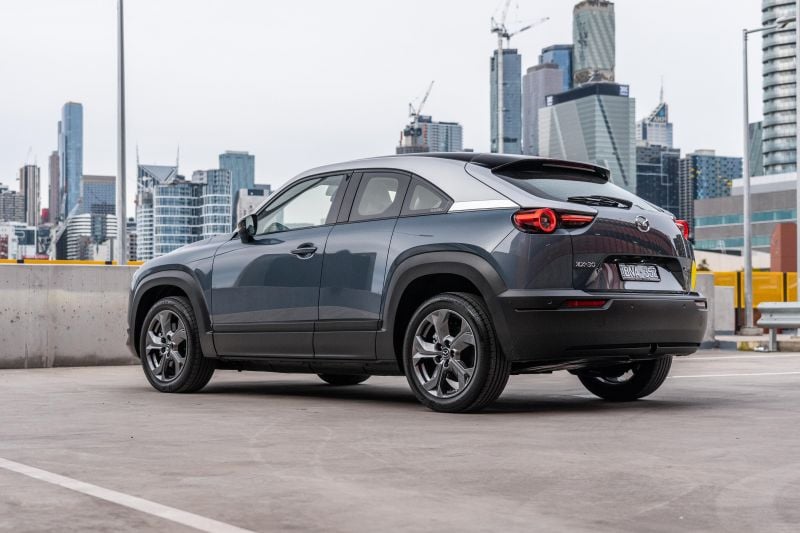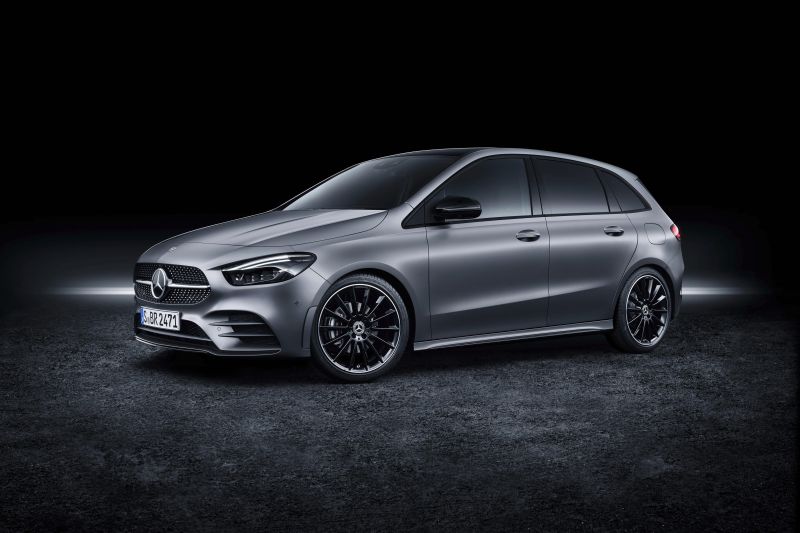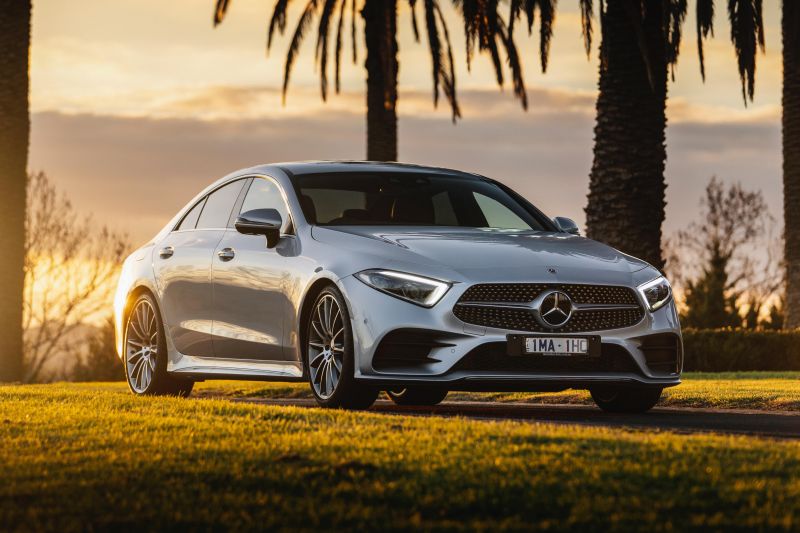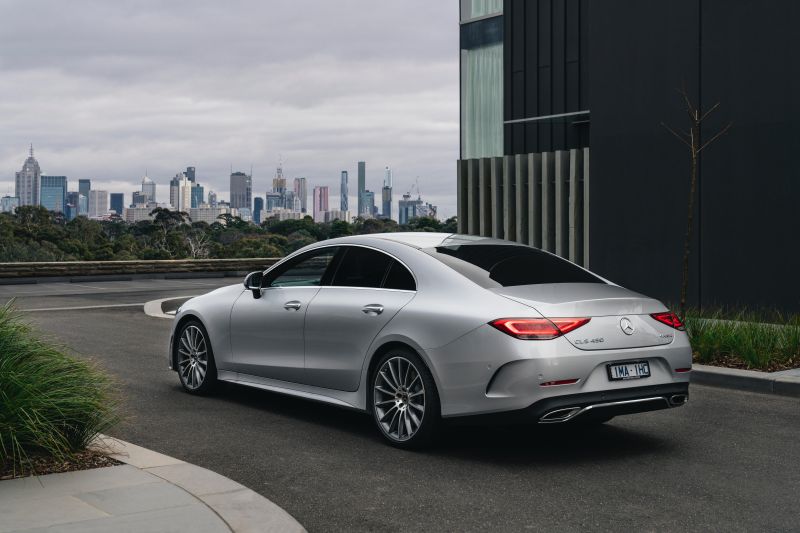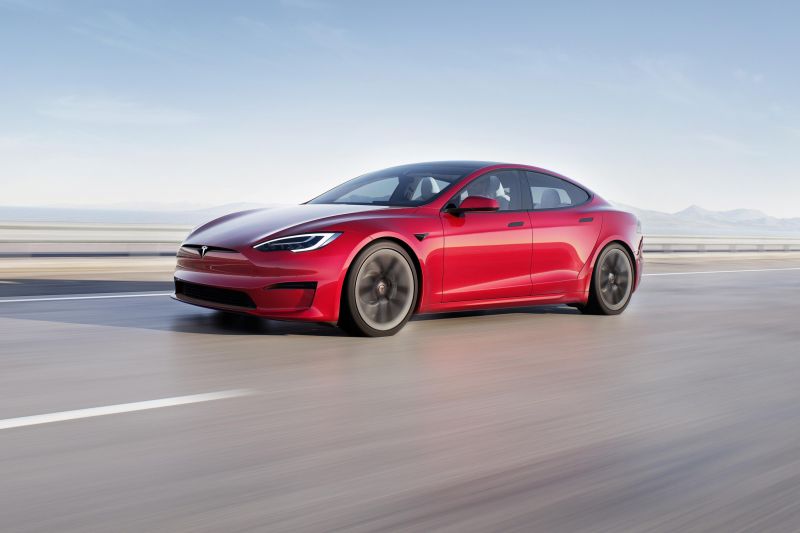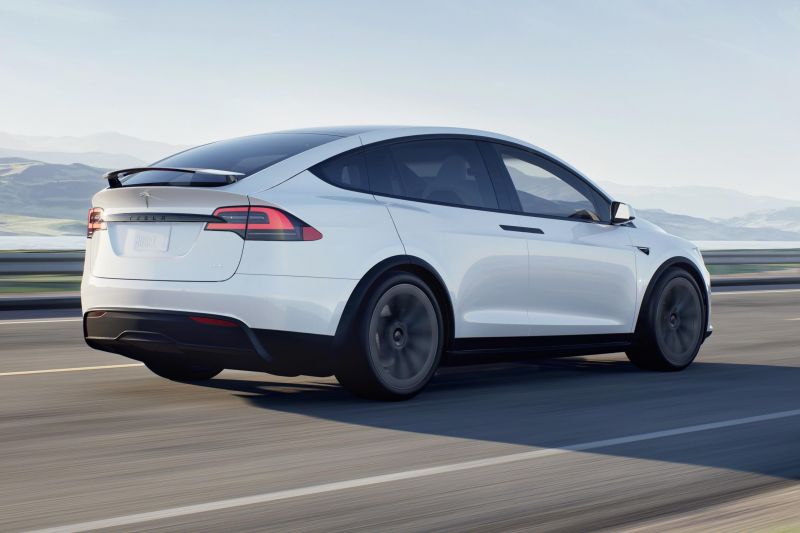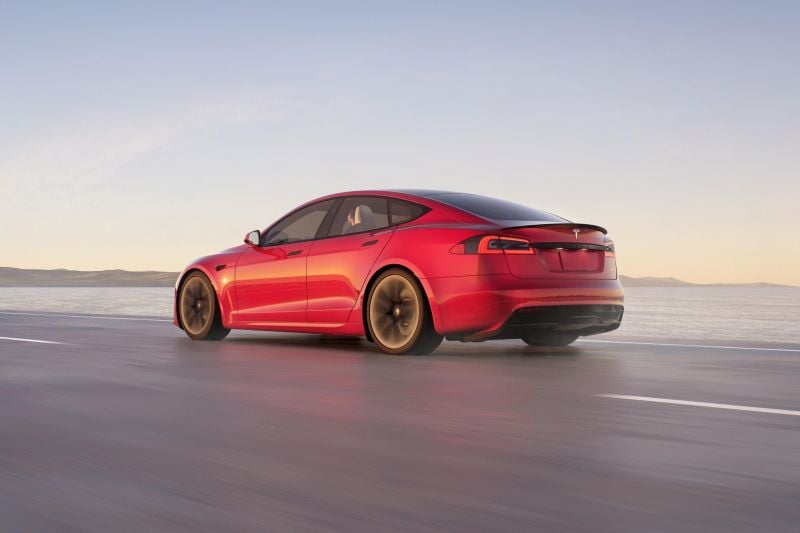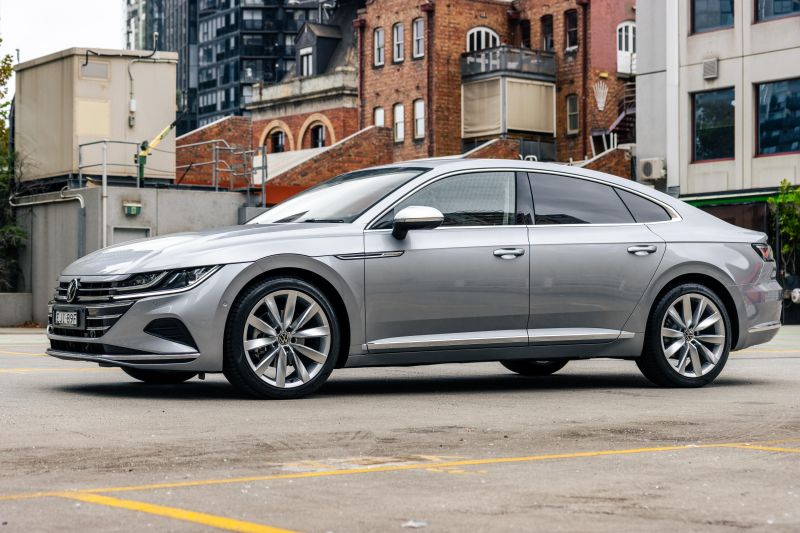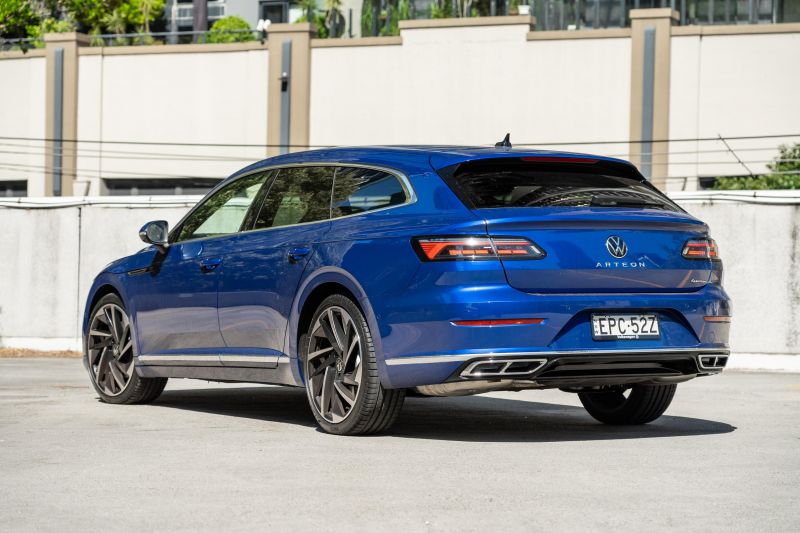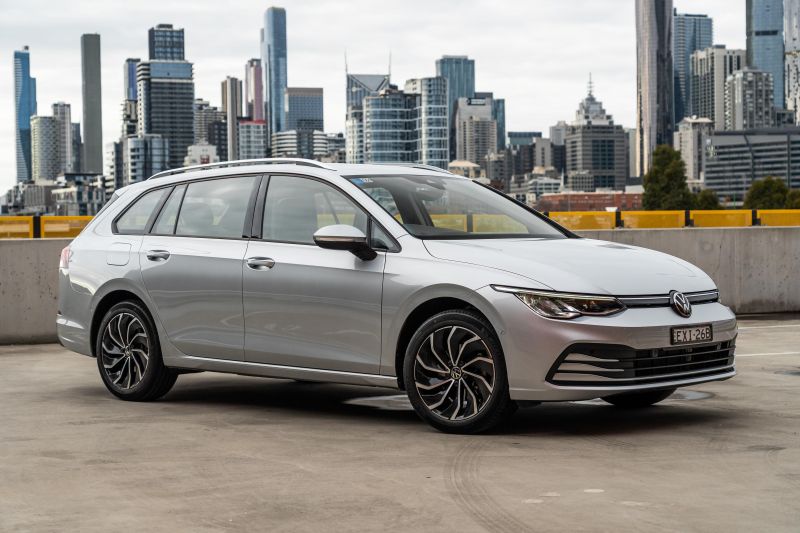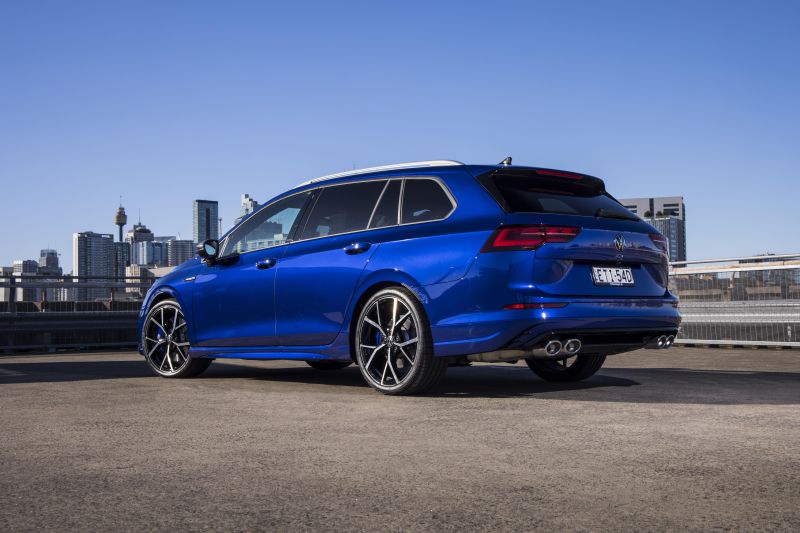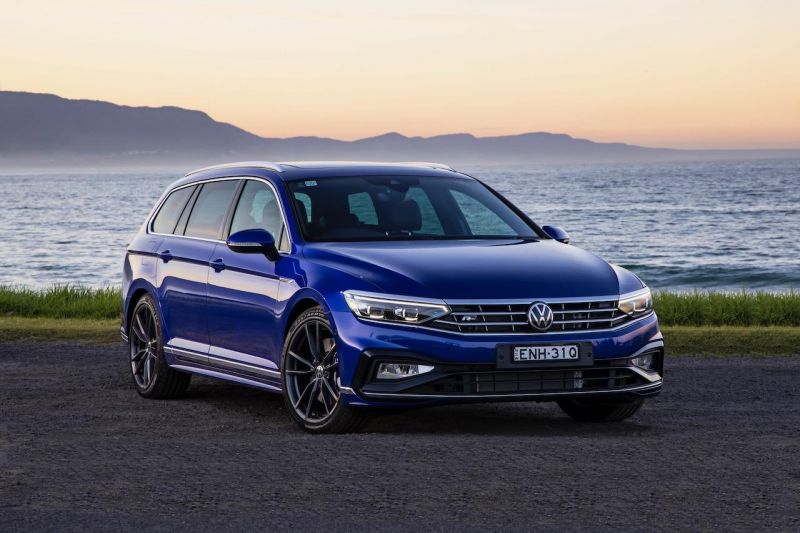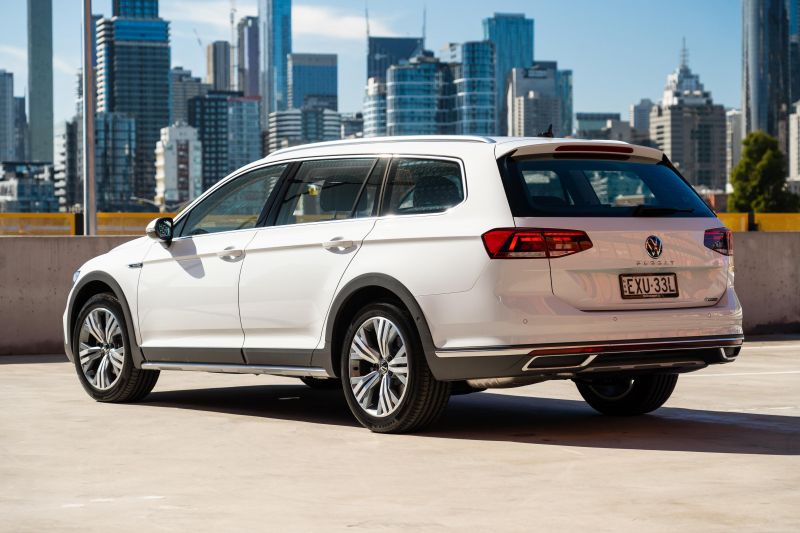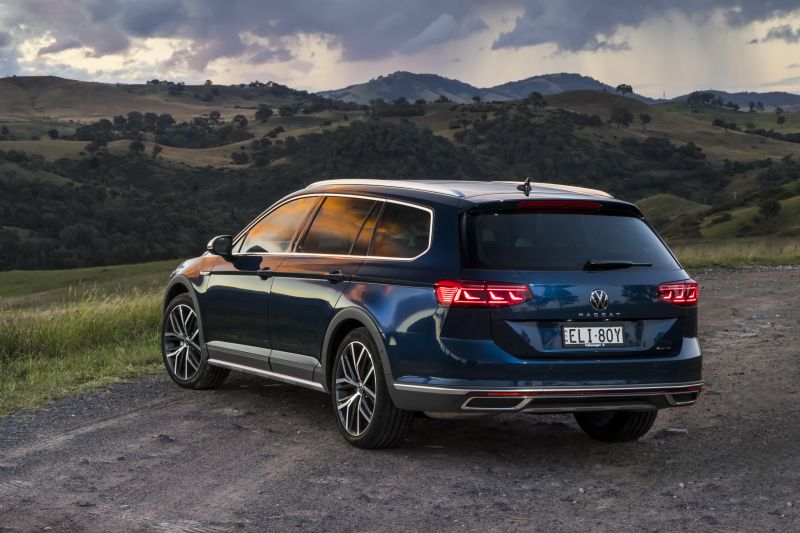Who would’ve thought 2023 would be the year Australians would say goodbye to long-running models like the Ford Escape, Kia Rio and Tesla Model S?
The axe has swung on a raft of nameplates that have been fixtures on the local market. Below, we’ve detailed all the cars that were discontinued in 2023.
Audi TT
We lost the Audi R8 in Australia in 2021, and now with the TT’s axing this year – coinciding with the end of global production – the brand has no more sports cars on offer.
That’s not to say there’s nothing sporty left in Audi showrooms, as the larger A5 coupe is still around. But there’s nothing quite as nimble and distinctive as the TT.
The TT first entered production in 1998, arriving here a year later. Its distinctively styled body was draped over humble Volkswagen Golf underpinnings, and Audi stuck with this same basic formula with the following two generations – though without the same funky Bauhaus styling of the first model.
The current generation launched here in 2014, but lost its convertible body style in 2019.
Audi is sending off the TT with a Final Edition, based on the 45 TFSI and unique from the Final Edition models offered in Europe and the US.
Over the life of the TT, Audi frequently used the roadster and coupe to debut new technologies for the brand.
The first-generation TT, for example, was the first production model to receive Audi’s ‘S-tronic’ dual-clutch automatic transmission.
The current model debuted new technologies for the brand such as the now ubiquitous Virtual Cockpit digital instrument cluster, plus an active rear spoiler and OLED tail lights.
Audi has yet to confirm whether it’ll launch a replacement for the TT.
MORE: Audi wraps up TT production after 25 years
MORE: Audi farewelling iconic TT with Final Edition in Australia
MORE: Everything Audi TT
Ferrari Portofino M
Ferrari is the latest company to replace a hardtop convertible with a more conventional soft top as the Portofino M, one of the last folding hardtop convertibles on the market, has been replaced by the Roma Spider.
The Portofino replaced the California T in 2017, which was the Prancing Horse’s first folding hardtop convertible. The hotter M, for Modificata (modified), came in 2020 with more power. It was also the first Ferrari drop-top to have a Race mode.
The Roma Spider has the same 457kW twin-turbocharged V8 as the Portofino M, while Ferrari claims its level of acoustic comfort is on par thanks to a five-layer fabric roof.
MORE: Ferrari’s new drop-top grand tourer spells end for familiar model
MORE: Everything Ferrari Portofino M
Ford Escape
The Ford Escape is dead again in Australia, but this time there’s no replacement mid-sized SUV waiting in the wings.
The original Escape launched here in 2001, but after multiple facelifts it was axed in 2012 with the European-market Kuga, first launched here in 2011, taking over as the brand’s mid-sized SUV.
With the mid-life update of the second-generation Kuga, launched in 2016, the Escape name was resurrected in Australia; it never left in markets like North America. Sales remained at around the same levels.
A replacement Escape came in 2020, with a repeatedly delayed plug-in hybrid arriving in 2022. But while it was positively received by critics like its predecessor was, its sales were even more disappointing with Ford blaming weak supply out of Spain.
So now, here we are: Ford is exiting Australia’s highest-volume segment, despite the Escape living on in markets like Europe and North America, and the related Bronco Sport being offered in the latter.
“We don’t make those nameplate decisions and those brand decisions lightly. We go through a very rigorous process, with multiple factors that go into making those decisions,” Ford Australia boss Andrew Birkic cryptically told media in April.
“We believe now is the right time,” he added.
It leaves Ford not only without a vehicle in a major segment, but also a gaping hole between the pint-sized Puma and the large Everest.
Technically Ford has a mid-sized SUV in the Mustang Mach-E, but that’s a dramatically more expensive model.
MORE: Ford Escape: Toyota RAV4 rival axed in Australia
MORE: Everything Ford Escape
Kia Rio
The Rio has been a fixture in Kia Australia showrooms since 2000, when it became the brand’s first light car here. In other markets, it replaced a reheated 1986 Mazda 121 called the Pride.
Four generations of Rio were offered here, with the latest arriving in 2017 exclusively as a hatchback. While the third-generation model’s 1.6-litre engine made way for a weaker 1.4-litre, a turbocharged 1.0-litre three-pot arrived in 2018 in the flagship GT-Line… but was axed in 2022 due to supply shortages.
The Chinese MG 3 may have overtaken it and every other light car in the sales race in recent years, but the Rio was still one of Australia’s best-selling light cars. Nevertheless, it’s getting the axe as its new, Mexican-built K3 replacement won’t be produced in right-hand drive, much as the latest Hyundai Accent went left-hand drive-only.
Kia says it will continue to offer affordable small cars in the smaller Picanto and larger Cerato.
The closely related Stonic crossover, which is almost identical both inside and under the skin, will serve as a stand-in for the Rio. But it’s a more expensive affair, with a base price over $2000 higher.
Despite being so similar to the Rio albeit with a higher price, the Stonic overtook it in the sales race in its very first year on sale in Australia. Last year, Kia Australia sold almost twice as many of the almost certainly more profitable “SUV” that has just 25mm more ground clearance than the Rio.
MORE: The Rio is dead, but Kia Australia won’t go SUV-only
MORE: Kia Rio being axed in Australia
MORE: This sporty Kia Rio replacement isn’t for Australia
MORE: Everything Kia Rio
Kia Stinger
The Kia Stinger is often regarded as the right car at the wrong time.
The timing seemed perfect at first for the sporty liftback, arriving after production of the rear-wheel drive Ford Falcon and Holden Commodore ended. The Stinger appeared poised to soak up sales from owners of Falcon XR6 Turbos and Commodore SS-Vs.
But the Australian market has been shifting inexorably towards SUVs, and the number of mid-sized and large passenger cars available in Australia has thinned dramatically.
To the Stinger’s credit, it managed to grow its sales every year until this year. Not only that, but 95 per cent of sales were of twin-turbo V6 models, with the flagship GT trim the most popular variant.
The final Stinger sales total for Australia is 11,455 cars since sales began in October 2017, with the last of dealer stock expected to be exhausted by now. The best year for the Stinger was 2022 with 2242 sales.
Police fleets also took to the Stinger, with around 325 sold to departments in Queensland, New South Wales, Victoria, Tasmania, the Northern Territory and Western Australia. Once again, the Stinger seemed a logical replacement for old Commodore and Falcon models.
But no matter how well it could have done here, the sporty Kia’s future was always going to hinge on how it performed in larger markets. And on that front, the news was grim.
The US seemed a logical market for it, but they are just as much in love with SUVs as Australians and the Stinger wasn’t helped by a cluttered Kia showroom that saw it sold alongside the K5, Cadenza and K900 sedans.
It was never going to be a huge hit in Europe, even if it was offered with a diesel engine there, while Korean and Chinese buyers typically prefer more conservative sedans.
Kia is also pursuing electrification aggressively, and the Stinger effectively handed the baton to the EV6 as the brand’s performance flagship. It remains to be seen whether a rumoured electric sedan replacement for the Stinger will come to fruition.
MORE: Kia is about to sell its last Stinger in Australia
MORE: You can no longer buy a Kia Stinger in Australia
MORE: Everything Kia Stinger
Mazda CX-8
The Mazda CX-8 arrived in 2018 as a companion for the CX-9.
While the CX-9 was designed with the North American market in mind, the CX-8 was aimed at Japan. To that end, it was narrower and offered a diesel engine, in contrast with the wider, petrol-only CX-9.
Effectively, the CX-8 is a stretched CX-5, a similar situation to the Volkswagen Tiguan and Tiguan Allspace.
For the first few years, the CX-9 outsold it by a significant margin but by 2020 they were selling in almost identical numbers.
That was helped by the addition of more affordable petrol-powered variants in 2020, though these lacked the turbocharging of the CX-9. A plush Azaki LE flagship with second-row captain’s chairs also joined the range in 2021.
Mazda announced in October 2023 it was axing the CX-8 along with the slower-selling MX-30, despite having just released a facelifted version earlier in the year and then telling CarExpert in July it had no plans to kill the CX-8 and would instead sell it alongside the CX-80 and CX-90.
All up, Mazda sold almost 25,000 vehicles over its five-year run.
The CX-80 has yet to be revealed, but will be a longer, three-row version of the CX-60. Once again, Australia will be one of the few markets to get both a narrower, Europe/Asia-focused model (CX-80) alongside a wider, North America-focused model (CX-90).
Given the CX-60 et all have a more premium positioning, riding a new rear/all-wheel drive platform and featuring inline six-cylinder and plug-in hybrid four-cylinder powertrains, the CX-80 is almost certain to be more expensive than the CX-8.
Therefore, with both the CX-8 and CX-9 wrapping up in Australia, buyers after a new three-row Mazda will be forking out more than before.
If you want a new CX-8, Mazda says there will still be stock available through the first quarter of 2024.
MORE: Mazda CX-8 discontinued in Australia
MORE: Everything Mazda CX-8
Mazda CX-9
Production of the Mazda CX-9 has wrapped up, with the erstwhile flagship crossover axed in favour of the even more premium CX-90.
It closes the book on the nameplate after 16 years in Australia, during which time it has consistently been one of the most popular vehicles in its segment.
The CX-9 was developed with the North American market front of mind, much like the Toyota Kluger and Nissan Pathfinder. Evidently, Australian and American tastes overlap quite a bit.
In its current, second generation, first launched in 2016, it has been more popular than ever despite some in-house competition in the shape of the aforementioned CX-8.
It has managed this feat despite lacking the option of hybrid (like the rival Toyota Kluger) or diesel (see: Hyundai Palisade and Santa Fe) options, with a single turbocharged four-cylinder petrol engine available.
The axing of the CX-8 and CX-9 is a blow to loyal Mazda buyers who want an affordable three-row SUV. After all, the new CX-90’s pricing starts around where the outgoing CX-9 tops out, while the upcoming CX-80 will almost certainly be at least mid-spec CX-9 money when it comes.
Mazda expects moving forward the CX-90 will do less than a third of the CX-9’s volumes, but it remains to be seen how many CX-80s the brand will shift.
Suffice it to say, Mazda is repositioning itself as a more premium brand. Just how this will impact profits and total brand volumes remains to be seen.
MORE: Mazda CX-9 finishing up in Australia
MORE: Everything Mazda CX-9
Mazda MX-30
The MX-30 is Mazda’s first electric vehicle, but the company also introduced this quirky crossover not with a hybrid or plug-in hybrid powertrain, but rather a particularly mild mild-hybrid one.
Both options came here in 2021, with the MX-30 standing out from the related CX-30 with its quirky ‘freestyle’ doors like those of the iconic RX-8. These impeded practicality but gave the MX-30 a unique selling point, while the interior featured interesting materials like recycled cork.
None of this translated to strong sales, with the electric version in particular languishing – not helped by its disappointing range.
While Mazda is launching a new rotary range extender powertrain in other markets, it confirmed in October it would axe the MX-30 line locally.
A total of 2297 examples have been sold from launch up to the end of November 2023. That’s equivalent to about two months’ worth of CX-30 sales, so even though the MX-30 was always intended to be a niche model, that’s not a sales figure to crow about.
If you still want one, there’ll still be some stock at Mazda dealerships into the first quarter of 2024. Beyond that, it’s gone, and it’s unclear when Mazda will introduce another EV here.
MORE: Mazda’s first electric car is leaving Australia after three years
MORE: Everything Mazda MX-30
Mercedes-Benz B-Class
The Mercedes-Benz B-Class was never a big seller in Australia, but was a consistent fixture in the three-pointed star brand’s showrooms. To that end, the company announced last year it planned to introduce a facelifted version in the third quarter of this year.
Then it backflipped, ending the B-Class’ almost 20-year run in Australia. The vehicle itself lives on in Europe, but is unlikely to see a fourth generation as Mercedes-Benz pares back its range of small cars.
As to why Mercedes-Benz Australia chose to axe the B-Class early, the company gave no reason. However, it’s clear it’s pruning lower-volume models, including wagons and plug-in hybrids.
While in the B-Class’ best year, 2013, Mercedes-Benz sold 3248 examples, the latest generation has never cracked four digits. Its already niche segment has dried up, with BMW opting not to bring the latest 2 Series Active Tourer here.
MORE: Mercedes-Benz backflips on updated B-Class, axes it instead
MORE: Everything Mercedes-Benz B-Class
Mercedes-Benz CLS
The Mercedes-Benz CLS four-door coupe really had nowhere to go, as the company continues to make its sedans ever sleeker and tries to prune lower-volume models as it rolls out dedicated electric vehicles (EVs).
With the similarly sized electric EQE on deck and CLS sales in decline globally, Mercedes-Benz clearly couldn’t make a case for another generation of the vehicle that arguably invented the modern four-door coupe.
Production ended in August.
The CLS’ best year in Australia was its debut season, 2005, where Mercedes-Benz sold 540 examples, followed by 509 in 2006 and 501 in 2007.
It has ebbed and flowed since, as fashion statement vehicles tend to do, though Mercedes-Benz came close to reaching those tallies in 2013 (456) and 2015 (451) with the second-generation model.
The third-generation model has been much less successful in Australia, with just 220 units sold in 2019, its best year. This slumped to just 30 units in 2021, before increasing slightly to 55 sales in 2022.
The CLS wasn’t the first vehicle to be marketed as a four-door coupe. The Rover P5 Coupe was introduced all the way back in 1962, while there were a handful of “hardtop” sedans similarly slinky to the CLS like the Mazda 323 Astina Hardtop.
But the CLS sparked a range of imitators, including the BMW 6 Series Gran Coupe and Volkswagen Passat CC, before the next hot niche became five-door liftback models like the Audi A5 Sportback.
In theory, the new EQE is similarly rakish and bold to the CLS. But in execution, it has a dramatically different and arguably more polarising look than the graceful and now defunct CLS.
MORE: Mercedes-Benz CLS axed in Australia, production ends soon
MORE: Everything Mercedes-Benz CLS
Tesla Model S and Model X
Tesla’s updated flagship vehicles were priced for Australia back in 2021, but dark clouds appeared in 2022 when this information was removed from the brand’s local website in 2022.
Then the bad news came in May 2023, with customers who had placed an order for a new Model S or Model X being emailed and told the updated models wouldn’t be coming here after all.
Australia wasn’t the only unlucky market, as Tesla confirmed the updated models would be produced only in left-hand drive. Customers who had placed an order were offered a refund plus a $3000 credit towards a new Model 3 and Model Y, the only vehicles Tesla offers here now.
The Model S arrived here in 2014, with the Model X following in 2016.
It’s unclear how many Model S and Model X vehicles were sold here in Australia as they were offered before Tesla sales figures were published in monthly VFACTS reports. These vehicles were significant, however, in showing Australian buyers that EVs didn’t have to be economy-focused commuter cars like the Nissan Leaf.
Instead, the Model S and Model X showed EVs could be aspirational, and it took an exceedingly long time for legacy luxury brands to launch vehicles that competed with them. Even now, there’s a serious dearth of premium three-row electric SUVs in Australia.
The Model S and Model X update brought a tri-motor Plaid performance flagship, as well as an overhauled interior with a new landscape-oriented infotainment touchscreen (like other Teslas) plus a steering yoke.
Sadly, we’ll never get to experience these updated models here.
MORE: Tesla Model S and Model X dead in Australia
MORE: Everything Tesla Model S
MORE: Everything Tesla Model X
Volkswagen Arteon
Volkswagen is about to roll out a range of new, electric nameplates in its Australian showrooms, so it has swung the axe on lower-volume combustion-powered models to free up space in its dealerships. That includes the niche Arteon liftback and its Shooting Brake wagon counterpart.
But the Arteon isn’t just leaving our market, with Volkswagen also pulling the plug on the model globally in a move to boost its profitability.
It was launched here in 2017 as a replacement for the CC, but just 1306 were sold before Volkswagen put the vehicle on hiatus. According to VFACTS sales data, the last one was sold here in April 2020.
It made its triumphant return in model year 2022, with an expanded range that included the slinky Shooting Brake. Despite its more premium positioning, it almost sold as well as the older, dowdier Passat – last year, for example, Volkswagen sold 612 Arteons and 759 Passats.
The Arteon also managed to outsell the likes of the Volvo S60 and V60 as well as its Audi A4 and A5 Sportback corporate cousins.
It’s being indirectly replaced by the electric ID.7, but that hasn’t been locked in for Australia. It leaves yet another group of Volkswagen buyers forced to look at an SUV if they want to stick with the brand.
MORE: Volkswagen Arteon won’t see 2024 in Australia
MORE: Everything Volkswagen Arteon
Volkswagen Golf Wagon
Volkswagen has been paring back its Golf line-up in Australia, and the wagon is a recent victim.
The brand has offered a Golf wagon in Australia since 2010, when the Mk5 wagon debuted. The Golf R wagon has been a fixture since the Mk7 model launched in 2015.
Alas, the small wagon segment has been decimated in recent years, with the Ford Focus, Holden Astra and Renault Megane wagons all axed. Golf Wagon buyers will instead need to look at the car’s Skoda Octavia corporate cousin, or defect to Peugeot and buy a 308 SW.
While either of those would be a logical replacement for somebody trading in the base Golf Wagon, there’s nothing that lines up neatly with the Golf R Wagon with its turbocharged four-cylinder engine and all-wheel drive; the Octavia RS, for example, is front-wheel drive-only.
“It’s a very deliberate decision to leave space within our dealerships, within our narrative to customers,” then-Volkswagen Australia managing director Michal Szaniecki told CarExpert in July.
“It makes no sense to have Arteon, Passat, [and Golf Wagon] with ID.4, ID.3, ID.5.”
For the admittedly small group of diehard wagon fans, the mass exodus of wagons from Volkswagen’s line-up is sad. If you’re one of them and you wouldn’t dare buy an SUV, best to head to a Skoda showroom.
MORE: Volkswagen Golf wagon axed in Australia
MORE: Everything Volkswagen Golf
Volkswagen Passat
The latest, ninth generation of Passat is the first to be offered exclusively as a wagon.
It comes as little surprise, then, that the new car hasn’t been confirmed for our market where wagons are vastly less popular than they are in Europe.
The outgoing model had already become wagon-only with the sedan’s retirement over a year ago, following the end of production for that model (in Europe at least; a separate Passat sedan is still offered in China).
The Passat has been on sale in Australia since 1977, albeit with a gap between 1982 and 1995.
Sales have been steadily declining since the launch of the current generation in 2015, apart from an uptick in 2020 when the range was expanded.
Volkswagen has offered a higher-riding Alltrack version of the Passat wagon since 2016 as an alternative to the Subaru Outback, but it has never managed to match the Japanese crossover in the sales race.
As with Golf Wagon fans, Passat buyers will need to either bite the bullet and buy a Volkswagen SUV or look over at sibling Skoda’s showrooms where the Octavia and Superb liftback and wagon ranges remain available. That includes the various police departments in Australia that currently use the Passat.
In Europe, the new Passat will be offered as a petrol or plug-in hybrid alternative to the new, electric-only ID.7 which has yet to be confirmed for Australia.
MORE: Volkswagen Passat axed in Australia
MORE: Everything Volkswagen Passat

